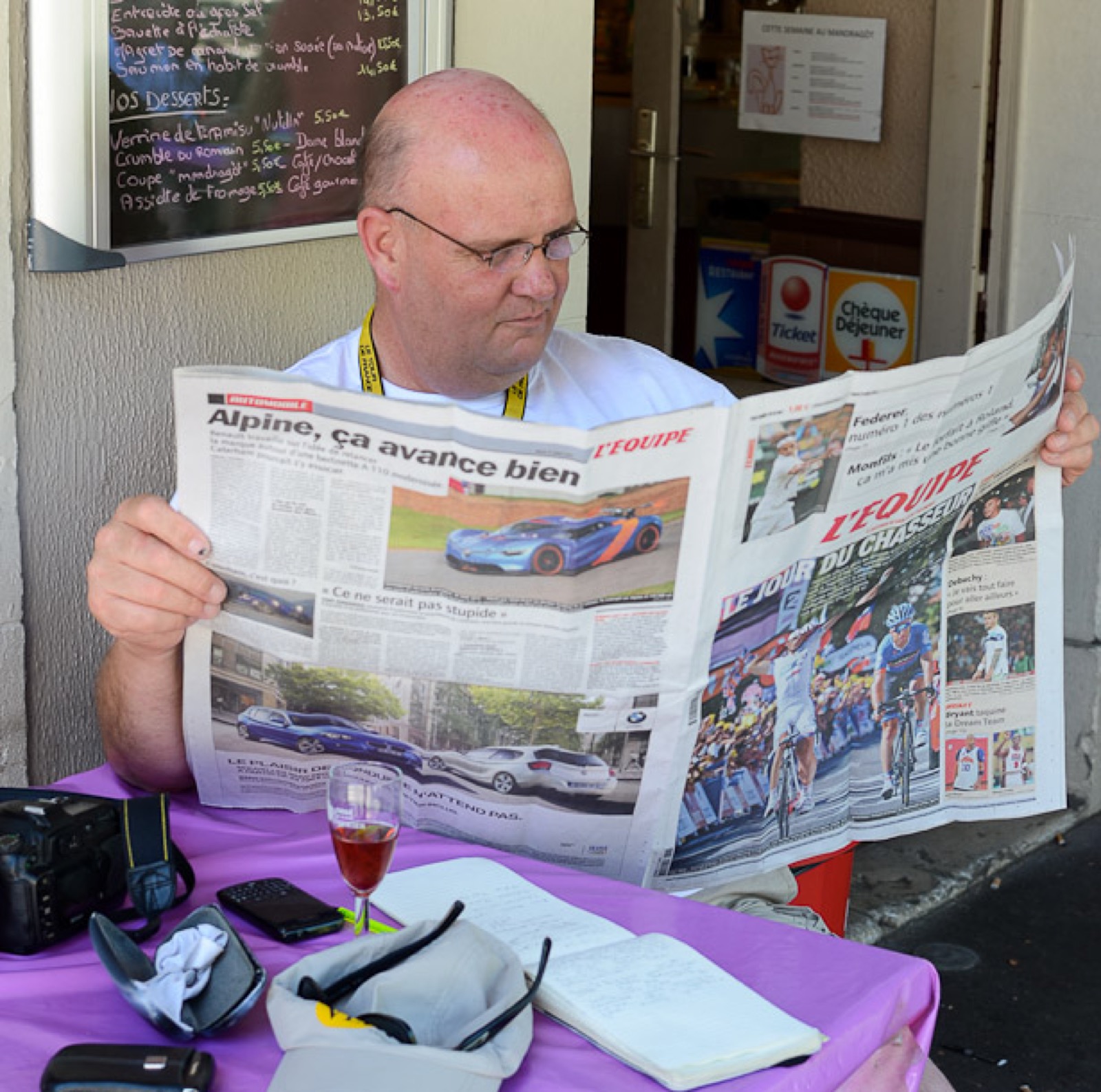Inga Thomson’s biography in the US Bicycling Hall of Fame induction sums her achievements up nicely: From her meteoric debut on the American scene in 1984, to her final major race – a dominating victory in the 1993 U.S. Women’s national championship road race – Inga proved herself to be one of the greatest women’s racers the sport has ever seen.
She began as a runner in her Reno, Nevada high school. She won nine individual state running titles in the largest school division. She attended Cal Poly San Luis Obispo to run and study engineering. As a freshman, she finished fourth in the cross country national championships.
In 1984 when some men in a local bicycle shop told her that the first ever Women’s Tour de France would be too tough for women, Inga bought a racing bike. Inga won the first five cycling races that she entered and she qualified for the Olympic Trials. She went on to finish 21st in the 1984 Los Angeles Olympic Road Race.
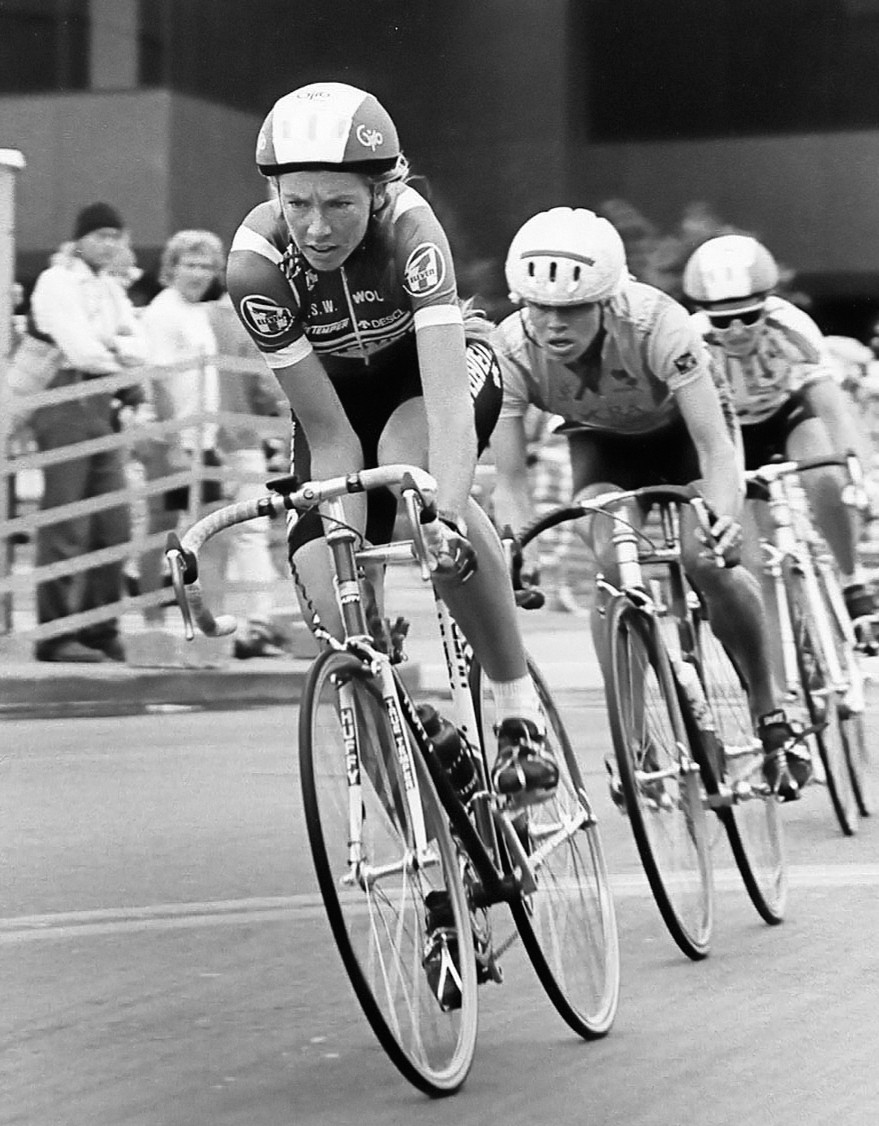
Due to overtraining and questionable directions by team coaches, Inga became seriously ill while battling Chronic Fatigue Syndrome. After recovering and relying on her own healthy training methods, she won the World Trials and qualified for the 1985 World Championships in road racing. She went on to win 10 National Championships (1987, 1988, 1991 & 1993) and finished second in three world championships (1987, 1990 & 1991). She competed in two more Olympics (1988 Seoul, 1992 Barcelona). After winning the 1993 U.S. Women’s national championship road race, Thompson abruptly severed all ties with cycling.
In 2012 she emerged in the public eye again and began sharing concerns about the sport based on her extensive experiences. She now enjoys skiing at her ranch in Hell’s Canyon, located along the border of eastern Oregon.
Now another of Mike Engleman’s ‘cycling ambassadors’ stable at Mission Sports, Inga Thompson took time to answer VeloVeritas‘ questions, recently:
You were a runner, originally – why turn to the bike, Inga?
“It all started when I was watching the Olympics with my Dad.
“There was an announcement that there would be a first ever Women’s Tour de France. I looked at my Dad and said, ‘I’m doing that race!’
“Little did I know it was a team sport and I’d have to find a team. It was just blind passion on my part, thinking I could just sign up, like most running races.”
From zero to the Olympics in the same season – impressive.
“So, I bought a bike after deciding to ride the Women’s Tour de France. I entered a few women’s races. About the fifth or sixth race I had entered, I was told I had qualified to go to the Olympic Trials.
“I might have had a dozen races to my name when I did the Olympic Trials.
“I was only an alternate, but eventually I was put on the Olympic team.”
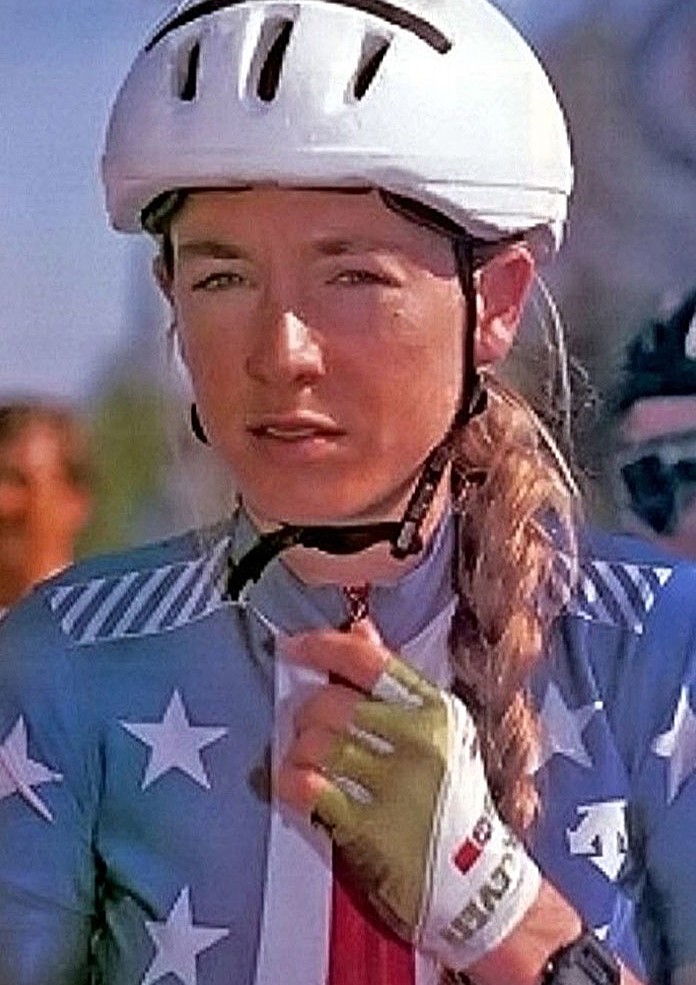
But right into the LA ‘blood doping’ controversy, that must have been a shock?
“No, it wasn’t a shock. All the signs were there. It just sounded like ’sour grapes’ or ‘poor loser’ to discuss it with the press.”
Is that part of the reason you’re so outspoken on the issue of doping?
“Once the doping became public knowledge, I felt I had freedom to speak.
“It was so difficult getting kicked out of the sport because I chose to be clean. But when I got lumped into the whole doping era, that’s when it really hit me.
“Not only did I lose many races, now I was potentially losing my integrity by being thrown into the era that had doped. It was a double whammy.
“I wanted there to be a voice for those who had chosen to stay clean. There were many, many out there that lost more than I did by taking the high road. My heart goes out to them.
“At least I got the chances that they didn’t. Many have had much more stolen from them than I did.”
Tell us about your chronic fatigue syndrome – a result of poor coaching?
“I believe so. I was a young, first year rider and the USCF trained me beyond my limits.
“Mostly ignorance in the sense they never spoke with me but workouts beyond my scope were forced upon me. I was just too young and too much.
“I became ill to the point that I was sleeping 20 plus hours a day, I was one big infection. My eyes, nose, ears, tonsils, wisdom teeth were all infected.
“It turns out I had a brain abscess, as well, combined with Chronic Fatigue. The next year, I was misdiagnosed with MS.
“The emotional devastation of thinking I would be in a wheel chair in a few years drove me to work on my health and also get all I could out of my life and bike racing until I succumbed to a wheelchair.
“It was a journey that would shape me for the rest of my life.”
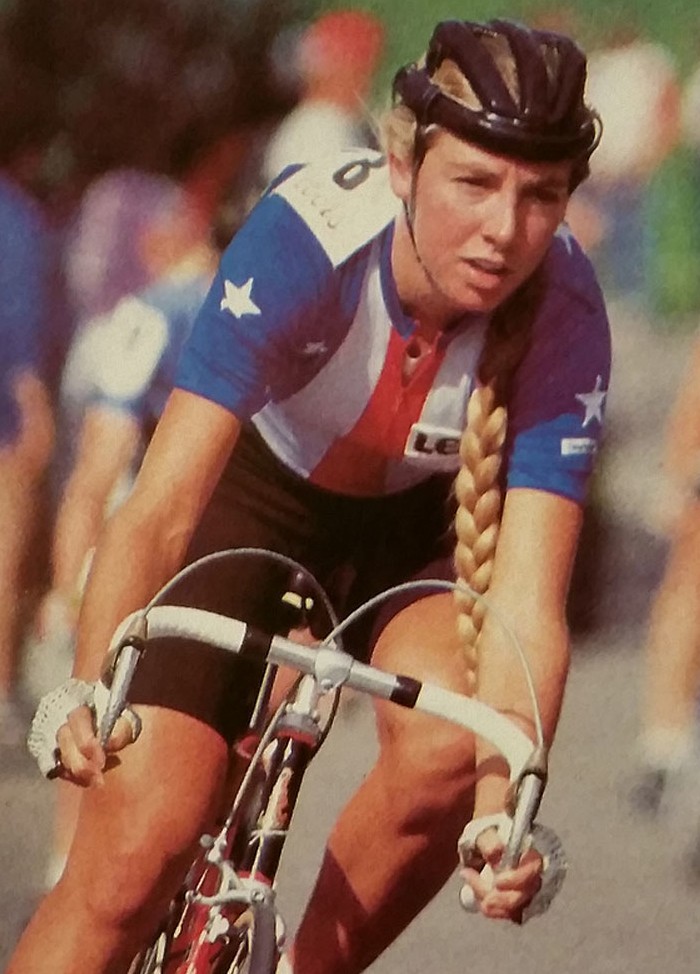
Do you think the fact that you were ‘clean’ was a factor in you perhaps never riding the Olympic Road Race you were capable of?
“Los Angeles in ‘84 was definitely out of my reach, I’d only raced for a few months. Seoul ’88; Monique Knol is Queen of Sprints. “No one could touch her in those hotly contested field sprints.
“I spent a few months in Holland with her, just to learn how to position for field sprints but 1988 was still a great race for me.
“I had established the only break during the race and was soloing to the finish line only to be reeled in during the final few kilometers.
“Watching Mara Abbott in this Rio Olympics brought back a lot of emotions. Barcelona, 1992 should have been my year, but just bad luck crashing right before a key break with Kathy Watt.
“It’s called bike racing…”
You were twice third in the ladies’ Tour de France, any ‘what ifs’ in there – a stronger team to back you, perhaps?
“In 1986, Maria Canins owned the race. I can’t say enough about what a good woman she is. She deserved the win. We had a good team that year.
“I’m still grateful to them for allowing me to join last minute. The USCF wasn’t sending women’s team to the largest stage race in the world. It was a real shame that they missed this great opportunity.
“1989, Longo, well, she radically changed and became an untouchable rider in the mountains. No amount of team support could have helped me.
“We had an excellent team. The USCF, for the first time, sent a Women’s Team. Sadly, the Women’s Tour de France Feminin disappeared the next year.”
And twice second in the Worlds TTT – again, any ‘what ifs’ – better preparation, perhaps?
“I don’t even know where to start with this one. We lost to the Russians by five seconds.
“In 1987, Sue Elhlers frame/headset broke 30 min before the start causing a high speed crash. She was hurt and bravely tried to rally. We lost her pretty quickly into the race.
“It was three of us against four Russians. I know we only got second but it was still one of my most amazing races we had as a team.
“In 1990, Jeannie Golay got pulled one day before the World’s TTT for a doping violation. It was really disheartening to have lost by so little to the Dutchies after months of preparation.
“As a team, we rallied well with a new rider thrown in one day before the World’s, but it just wasn’t enough to win.”
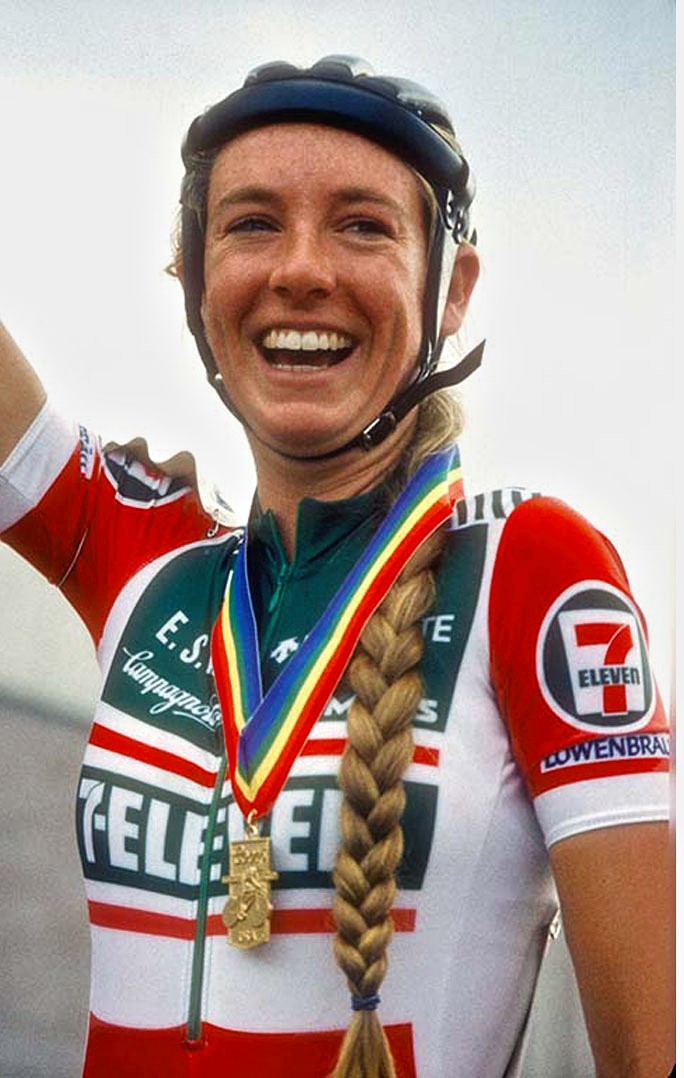
Tell us about the ’88 Tour Cycliste Feminin de la Drome – a race you won in Arctic conditions.
“It was one of my fonder memories because I was actually able to stay with Longo on the climbs.
“I remember being frozen, my fingers too numb to feel anything which made braking on the descent tricky with the slushy snow. The derailleur was frozen and I had to work it, trying to de-ice it, just to be able to shift. I was probably able to stay with Longo because it was such arctic conditions and I carried substantially more body fat. She had a down parka on. All I had was a skinsuit because we had started with a warm, sunny day.
“It was quite the shift in weather in a few hour period heading into the Alps. A Smartphone with a weather app would have been really sweet back then.
“My winnings for this effort? One huge pepper grinder, salad forks and laundry detergent.
“I have to give a ton of credit to a coach I had in High School, Lyle Freeman. He’d always drag us out in these Arctic conditions to train in the mud, snow, steep hills. It was just wild at times and he’d be happily laughing the whole time. It was an infectious, fun attitude and I found myself developing this attitude over the years where, when the weather got really nasty, it brought out the fun side of me, the ‘Bring It On’ attitude.
“In 1983, I’d never placed well at any race my freshman year at College until the National Championships. It was 40 below with wind chill, deep snow drifts and I placed fourth as a Freshman. I credit that to Mr. Freeman and that contagious attitude of his…”
Your last race was the National Road race Championship – which you won but then quit the sport…
“This race was also the automatic qualifier to be on the World Championship team.
“Mark Gorski forced my resignation by putting me in a catch 22 situation.
“I do wish I’d had an advocate at the time who would have helped, but I think we all understand now (20 odd years later) what was going on and why.”
What do you rate as your ‘finest hour’ in the sport?
“There were several, but I think my fav was my win in France, Tour d’Epinal. Leontien van Moorsel was off the front. I was with Longo and her team mate.
“I was waiting for an attack by one of them, but got impatient. I attacked, waiting for their counter. Nothing. I kept looking over my shoulder, still nothing, I just slammed.
“I caught up with Leontien, was impatient, again, thinking Longo and company would bear down on us, so I just put my head down and went as hard as I could, knowing I’d have a better chance out-sprinting Leontien one on one.
“I signaled for her to pull thru and she was just gone. I soloed in for my win.
“I was so excited because I felt I had broken thru a new barrier in my training, but mostly confidence in myself.
“All of it was dashed when I got on the phone a few hours later to tell my fiancé of my win, only to hear he was in the hospital with an arrhythmia and was facing surgery.
“It just took the wind out of my sails.”
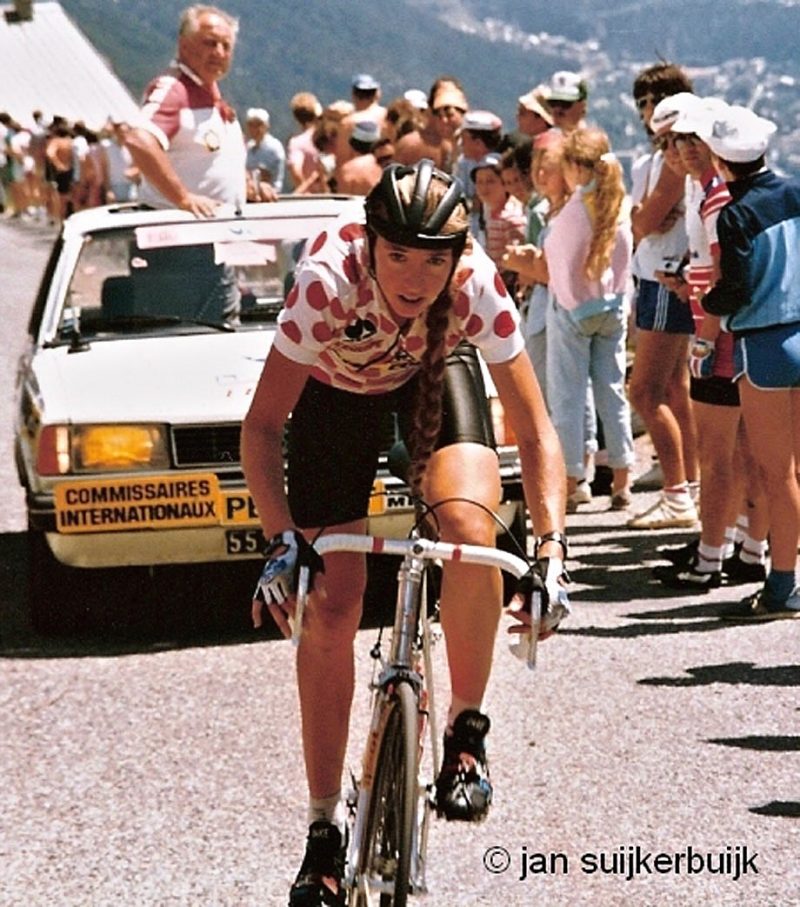
Tell us about your 20 year ‘exile’ please – why ‘blank’ the sport?
“I was beyond angry being forced to resign my automatic qualifying spot on the World’s Team after winning the National Championships, combined with the women’s big races were disappearing and a Federation that didn’t really seem to truly care about women’s racing, all the signs pointed towards leaving while I was still on top.
“It was too painful to watch what was going on in the sport, so I shut it out, I refused to even speak about cycling or even tell anyone I raced a bike.
“My ranch was a place to hide for me. I’m in a patriarchal, ranching community where it allowed me to escape.
“I always had this dream of farming with horses.”
Would you have liked to be racing now – more teams – a wider program and maybe a little more money?
“No, I wouldn’t want to be racing now.
“It doesn’t seem, from the outside, that much has changed. There does seem to be positive change happening in the racing field for the women.
“I see more and more advocates for the women, more grass roots programs, more awareness, more coverage.
“Now that my son is off to college and wrapping up my cattle ranch, I’d like to help in the movement for the women. It’s time for me to give back to the sport.”
“You ski now – any competition involved?
“I’ll never race again but I do live to ski!
“It’s my escape and joy.”
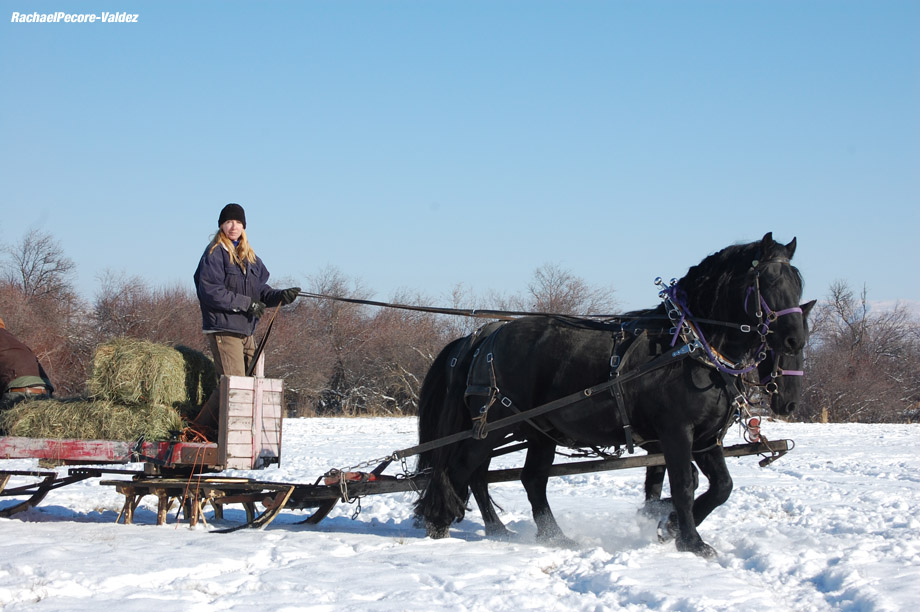
And if you could do it all over again?
“We were all so young back then. Hindsight is wonderful. I’d have spent more time getting to know the people in our federation and try to work with them more, to have been more a voice for the women, advocated for better coaches, more support for the women.
“Yet, at the time, all I wanted to do was race my bike as hard as I could. It was my love, my passion, my world.”


